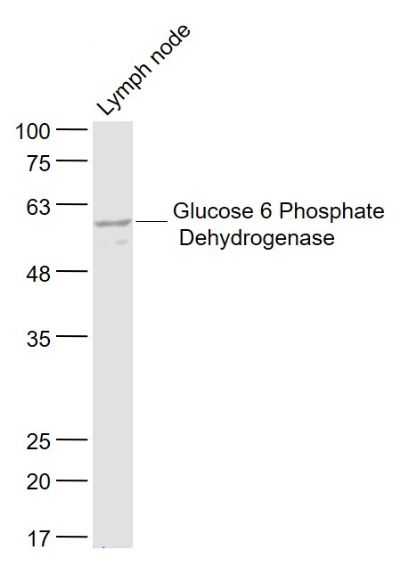Defects in G6PD are the cause of chronic non-spherocytic hemolytic anemia (CNSHA) . Deficiency of G6PD is associated with hemolytic anemia in two different situations. First, in areas in which malaria has been endemic, G6PD-deficiency alleles have reached high frequencies (1% to 50%) and deficient individuals, though essentially asymptomatic in the steady state, have a high risk of acute hemolytic attacks. Secondly, sporadic cases of G6PD deficiency occur at a very low frequencies, and they usually present a more severe phenotype. Several types of CNSHA are recognized. Class-I variants are associated with severe NSHA; class-II have an activity <10% of normal; class-III have an activity of 10% to 60% of normal; class-IV have near normal activity.
Function:
Produces pentose sugars for nucleic acid synthesis and main producer of NADPH reducing power.
Subunit:
Homodimer or homotetramer
Tissue Specificity:
Isoform Long is found in lymphoblasts, granulocytes and sperm.
DISEASE:
Defects in G6PD are the cause of chronic non-spherocytic hemolytic anemia (CNSHA) [MIM:305900]. Deficiency of G6PD is associated with hemolytic anemia in two different situations. First, in areas in which malaria has been endemic, G6PD-deficiency alleles have reached high frequencies (1% to 50%) and deficient individuals, though essentially asymptomatic in the steady state, have a high risk of acute hemolytic attacks. Secondly, sporadic cases of G6PD deficiency occur at a very low frequencies, and they usually present a more severe phenotype. Several types of CNSHA are recognized. Class-I variants are associated with severe NSHA; class-II have an activity <10% of normal; class-III have an activity of 10% to 60% of normal; class-IV have near normal activity.
Similarity:
Belongs to the glucose-6-phosphate dehydrogenase family.
SWISS:
P11413
Gene ID:
2539
Database links:
Entrez Gene: 281179 Cow
Entrez Gene: 2539 Human
Entrez Gene: 14381 Mouse
Entrez Gene: 24377 Rat
Entrez Gene: 443211 Sheep
Omim: 305900 Human
SwissProt: P11413 Human
SwissProt: Q00612 Mouse
SwissProt: P05370 Rat
Unigene: 461047 Human
Unigene: 684904 Human
Unigene: 27210 Mouse
Unigene: 11040 Rat
| Picture |
Sample:
Lymph node (Mouse) Lysate at 40 ug
Primary: Anti- Glucose 6 Phosphate Dehydrogenase (SL4974R) at 1/1000 dilution
Secondary: IRDye800CW Goat Anti-Rabbit IgG at 1/20000 dilution
Predicted band size: 57 kD
Observed band size: 57 kD
|
|
|
